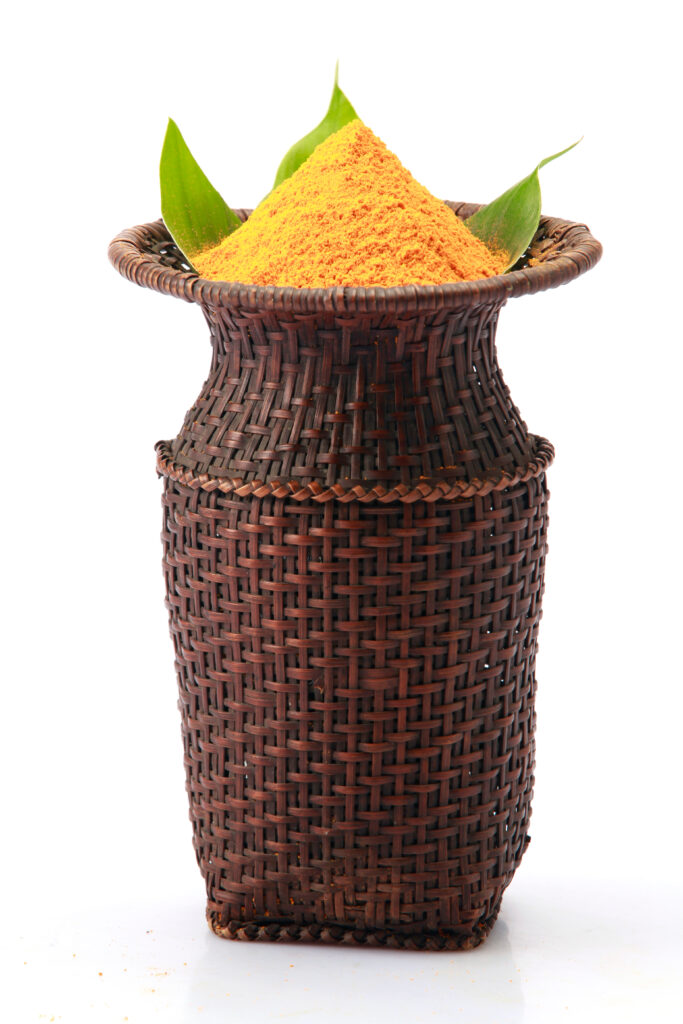Lakadong Turmeric: The World’s Best Turmeric
from the Heart of Meghalaya.
The Remarkable Benefits Of Turmeric

Turmeric, often referred to as Nature’s Golden Spice, provides abundant health benefits that can significantly enhance your overall well-being. At the heart of these benefits lies its primary active compound – Curcumin.
Curcumin which is found abundantly in turmeric, possesses a remarkable array of beneficial properties, making it a true wonder of nature. Its antibacterial, antifungal, antiviral, antioxidant and anticancer activities are just the tip of the iceberg. This powerful compound has the potential to mitigate a range of conditions, including arthritis, alzheimer’s and certain malignancies, ushering in a new era of well-being.
It offers a multitude of properties that contribute to its effectiveness in combating various diseases including diabetes.
Studies even indicate that it can contribute to the reduction of cancerous cells, inhibit angiogenesis (the growth of new blood vessels in tumours) and suppress metastasis (the spread of cancer). It may even act as a preventive measure against cancers, particularly those of the digestive system such as colorectal cancer.
Curcumin’s remarkable anti-inflammatory and antioxidant properties also extend to enhancing skin health. It brightens the skin, reduces dark spots, pigmentation and can even help fade acne scars. Little wonder that in India, turmeric is a key component of pre-wedding beauty rituals, bestowing the brides-to-be with a radiant golden glow.
But curcumin’s benefits aren’t limited to the skin and body alone. It boosts levels of the brain hormone BDNF (brain-derived neurotrophic factor), stimulating the growth of new neurons and potentially countering degenerative processes in the brain. Depression, which is often associated with reduced BDNF levels and a shrinking hippocampus, can potentially be alleviated with curcumin’s assistance as it boosts BDNF levels, potentially reversing some of these changes.
Furthermore, studies suggest that curcumin could also serve as a promising anti-ageing supplement. Since oxidation and inflammation are believed to contribute to the ageing process, curcumin may offer benefits extending far beyond mere disease prevention.
Throughout history, experts have praised the use of turmeric in the cosmetic industry. With the evolution of the global cosmetic industry, turmeric is now being innovatively incorporated into a wide range of beauty products, including face washes, scrubs, soaps, aroma oils and body butters, all harnessing the goodness of turmeric for your skin.

Turmeric is one of the most favorite health foods in Japan
and is known as "super food".
Okinawa, Japan is the hometown of longevity in the world. The consumption of turmeric is considered to be one of the main reasons for the longevity of Okinawa people.
Enhance Your Food's Flavour with Turmeric

Smoothie

Milk

Soup

Egg

Muffins

Rice

Roasted Veggies
Enhance Your Food's Flavour with Turmeric
Turmeric plays a pivotal role in every kitchen and cuisine, imparting vibrant colours and rich flavours to food items, defining the essence of the spice rack globally.
Whether you are crafting a refreshing smoothie, a comforting soup, a medley of veggies or a fragrant bowl of rice, turmeric has the power to elevate your culinary creations, infusing them with an extra dash of zest. Beyond enhancing taste, incorporating turmeric into your meals boosts antioxidant levels and bolsters your body’s defence mechanism against several illnesses, including cancer.
Turmeric’s versatility enhances the taste of food in myriad ways, making it an essential ingredient in every cuisine. Whether you are savouring vegetarian or non-vegetarian dishes, from Khichdi – an Indian soupy specialty of rice and lentils, to classic Indian dal or enjoying accompaniments like pickles and chutneys, turmeric adds a delightful touch to a wide range of Indian cuisines, pleasing the palates of all.
Turmeric’s remarkable adaptability enhances the taste of food in countless ways, solidifying its status as an indispensable component of every culinary tradition. Its versatility extends across the globe, seamlessly blending into smoothies, offering potential health benefits and enhancing the flavours of your food items.
In curry dishes from India, Thailand or the Middle East, turmeric plays a central role, enhancing both meat and vegetarian preparations. Iconic dishes like Indian Biryani and Persian Saffron rice owe their brilliance to turmeric’s touch.
Turmeric also shines in the art of pickling, amplifying both flavour and colour to create beloved turmeric pickles, a cherished side dish in India.
Turmeric’s unique spice profile infuses sausages, pickles, sauces and dry mixes with an irresistible taste, transforming everyday fare into extraordinary culinary experiences. It takes the lead in marinades for meats and seafood, elevating their taste to new heights.
For those who relish roasted vegetables, turmeric serves as a seasoning, imparting a radiant golden hue and a tantalizing burst of flavour. Whether you are a seasoned chef or a home cook, remember to enhance your food with the magical touch of turmeric and add that extra zing to your culinary adventures.
"It has been observed during the microbiological study of the product that even after 9 months, there has been no change in the quality of the product which indicates it's superior nature in terms of quality." - Lab Report
Lakadong Turmeric
Sources
Prasad, S., & Aggarwal, B. B. (2011). Turmeric, the Golden Spice: From Traditional Medicine to Modern Medicine. In Advances in Experimental Medicine and Biology, 595, 1-75.
Chattopadhyay, I., Biswas, K., Bandyopadhyay, U., & Banerjee, R. K. (2004). Turmeric and curcumin: Biological actions and medicinal applications. Current Science, 87(1), 44-53.
Dufresne, A. (2007). Food uses of turmeric and curcumin. In Curcumin: The Indian Solid Gold (pp. 81-91). Springer.
Deo, B. (2003). Traditional knowledge of biodiversity and its conservation in the traditional agricultural systems of the Himalayas. Journal of Herbs, Spices & Medicinal Plants, 10(3), 53-83.
Pruthi, J. S. (1980). Spices and condiments: Chemistry, microbiology, technology (Vol. 1). Academic Press.


